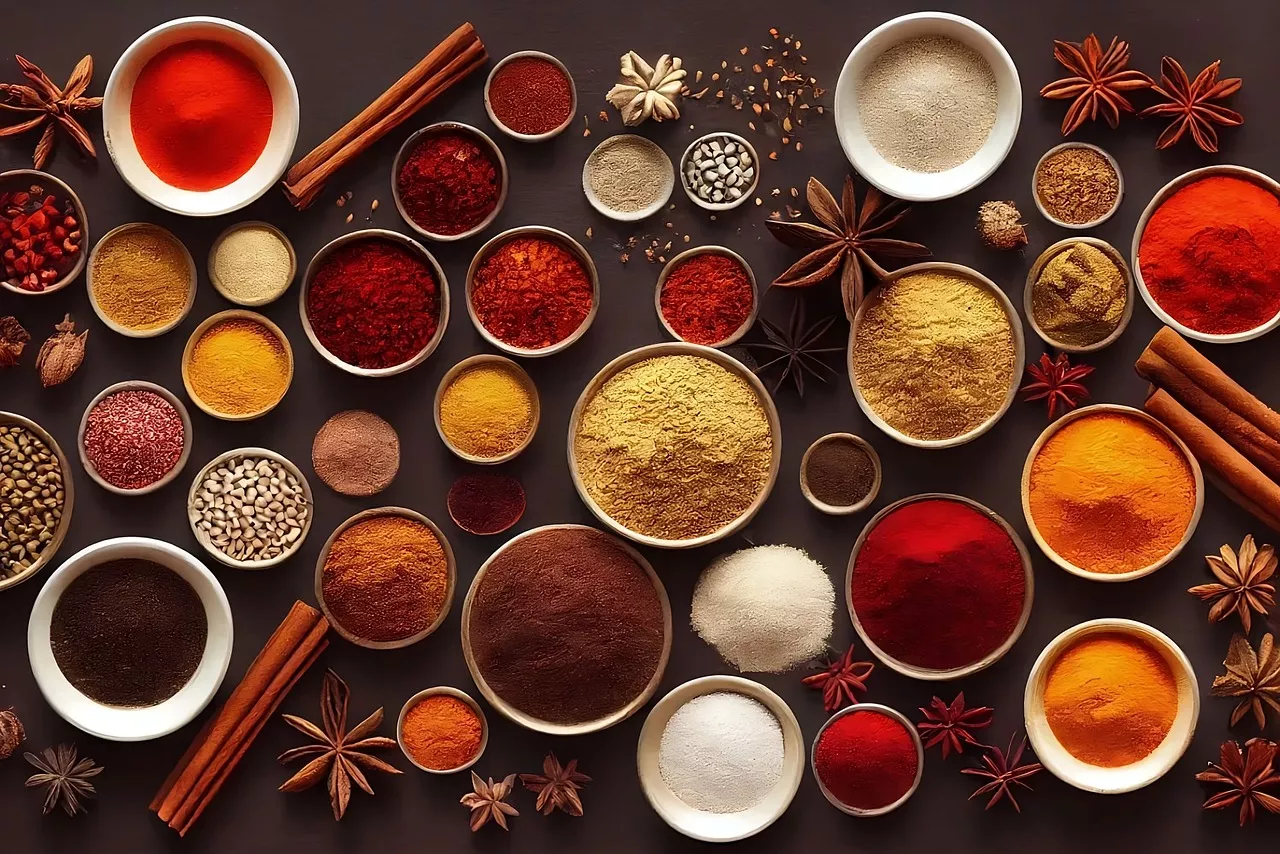Origins of Indian Cuisine
Indian cuisine has a history as rich and diverse as the country itself. Its origins can be traced back to ancient times, with influences from various civilizations and cultures that have left their mark on the subcontinent. The foundations of Indian cuisine were laid by the Indus Valley Civilization, one of the world's oldest urban civilizations. Archaeological excavations have revealed evidence of a well-developed agricultural system, with an abundance of grains, fruits, and vegetables that formed the basis of their diet.
Over the centuries, India saw the rise and fall of several empires, each leaving its imprint on the cuisine. The Mauryan Empire, Gupta Empire, and Mughal Empire all played a significant role in shaping Indian culinary traditions. The Mughals, in particular, brought with them a love for rich, aromatic dishes and introduced techniques such as slow cooking and the use of exotic spices.
Influence of Geography on Indian Cuisine
The diverse geography of India has had a profound impact on its cuisine. With its vast coastline, fertile plains, and towering mountains, the country boasts a wide range of climatic conditions and ecosystems, leading to an incredible variety of ingredients and flavors.
The coastal regions of India, such as Kerala and Goa, are known for their seafood delicacies. The abundance of fresh fish and shellfish has given rise to dishes like fish curry, prawn masala, and crab fry. The fertile Gangetic plains in North India are renowned for their wheat and rice cultivation, leading to the popularity of breads like naan, roti, and paratha. The mountainous regions of the Himalayas are home to unique ingredients like wild mushrooms, ferns, and herbs, which find their way into traditional dishes like Himachali kadhi and pahadi kebabs.
Evolution of Indian Cuisine through the Ages
Indian cuisine has evolved over thousands of years, influenced by both internal and external factors. The arrival of the Portuguese, Dutch, British, and French traders brought new ingredients, cooking techniques, and flavors to the Indian shores. The spice trade, in particular, played a crucial role in shaping Indian cuisine. Spices like cinnamon, cardamom, cloves, and black pepper were highly prized and sought after by traders from all over the world.
As trade routes expanded, Indian spices found their way to far-flung corners of the globe, forever changing the culinary landscape. The spice trade not only introduced new ingredients to Indian cuisine but also brought back foreign influences, creating a fusion of flavors that is unique to Indian cooking. The British, for example, introduced tea, which quickly became a staple beverage in India, and the Portuguese left behind a love for spicy vindaloo and tangy sorpotel.
Regional Variations in Indian Cuisine
One of the most fascinating aspects of Indian cuisine is its incredible diversity. Each region of India has its own distinct culinary traditions, influenced by factors such as climate, geography, and cultural practices. From the fiery curries of the South to the delicate flavors of the North, every region offers a unique gastronomic experience.
In the North, Punjabi cuisine is known for its rich and hearty dishes like butter chicken, dal makhani, and tandoori roti. The cuisine of Rajasthan, on the other hand, is characterized by its vibrant flavors and the use of ingredients like gram flour, yogurt, and dried fruits. In the South, the cuisine is dominated by rice-based dishes like dosa, idli, and sambar, with coconut, tamarind, and curry leaves adding depth and complexity to the flavors.
Key Ingredients Used in Indian Cooking
Indian cuisine is synonymous with its bold and aromatic flavors, thanks to the skillful use of a wide range of ingredients. From aromatic spices to fresh herbs, each ingredient plays a crucial role in creating the distinctive tastes that make Indian food so beloved.
Spices are at the heart of Indian cooking, and no Indian dish is complete without a medley of flavors. Cumin, coriander, turmeric, cardamom, and cloves are just a few of the spices that lend their unique flavors to Indian dishes. These spices not only enhance the taste of the food but also have medicinal properties and are believed to promote good health.
Fresh herbs like cilantro, mint, and curry leaves are also widely used in Indian cooking, adding a burst of freshness and aroma to dishes. Ginger, garlic, and green chilies are staple ingredients in many Indian recipes, providing a spicy kick and adding depth to the flavors.
Popular Dishes in Indian Cuisine
Indian cuisine is a treasure trove of mouthwatering dishes that cater to a variety of tastes and preferences. From vegetarian delights to succulent meat curries, there's something for everyone in the vast repertoire of Indian cooking.
One of the most iconic dishes in Indian cuisine is butter chicken, a rich and creamy tomato-based curry that originated in the kitchens of the Mughal emperors. Another classic is biryani, a fragrant rice dish layered with meat, spices, and saffron. The South Indian dosa, a crispy pancake made from fermented rice and lentil batter, is a popular breakfast option, while the street food favorite, golgappa, is a must-try for those who love spicy and tangy flavors.
Traditional Cooking Techniques in Indian Cuisine
Indian cuisine is known for its intricate and time-consuming cooking techniques, which are passed down through generations. These techniques not only preserve the flavors of the ingredients but also add depth and complexity to the dishes.
One such technique is tandoori cooking, which involves marinating meats or vegetables in a yogurt-based mixture and then grilling them in a clay oven called a tandoor. This method imparts a smoky flavor and a charred texture to the food, making it incredibly delicious.
Another popular cooking technique in Indian cuisine is dum cooking, where ingredients are slow-cooked in a sealed pot over a low flame. This method allows the flavors to meld together, resulting in rich and aromatic dishes like biryani and dum aloo.
The Role of Spices in Indian Cuisine
Spices are the backbone of Indian cuisine, adding depth, flavor, and aroma to every dish. They are not just used for heat but are also valued for their medicinal properties and ability to enhance digestion.
Each spice has its own unique flavor profile and health benefits. Turmeric, for example, is known for its anti-inflammatory properties, while cardamom is believed to aid digestion. Spices like cumin, coriander, and fenugreek are used as flavor enhancers, while red chilies add heat and a vibrant red color to dishes.
Indian Street Food and Its Significance
Indian street food is a culinary adventure in itself, offering a wide variety of flavors and textures that are sure to tantalize your taste buds. From spicy chaats to crispy pakoras, the streets of India are a food lover's paradise.
Street food plays a significant role in Indian culture, serving as a meeting point for people from all walks of life. It brings communities together, offering a taste of the local flavors and showcasing the culinary creativity of the vendors. Whether it's the tangy pani puri of Mumbai or the spicy aloo tikki of Delhi, street food is an integral part of the Indian culinary experience.
The Impact of Indian Cuisine on Global Culinary Trends
Indian cuisine has had a profound influence on global culinary trends, with its bold flavors and vibrant spices making their way into kitchens around the world. Indian restaurants can be found in almost every major city, and dishes like butter chicken, tikka masala, and samosas have become household names.
The popularity of Indian cuisine can be attributed to its ability to cater to a wide range of dietary preferences. With an emphasis on vegetarian and plant-based dishes, Indian food offers a healthy and flavorful alternative to traditional meat-based cuisines. The use of spices and herbs also adds depth and complexity to dishes, making them a favorite among food enthusiasts.
Conclusion: Appreciating the Richness of Indian Cuisine
As we come to the end of our journey through the rich history of Indian cuisine, it's clear that there's much more to this culinary tradition than meets the eye. From its ancient origins to its modern-day influence on global culinary trends, Indian cuisine continues to captivate our taste buds and expand our culinary horizons.
So next time you sit down for a meal at an Indian restaurant or try your hand at cooking an Indian dish, take a moment to appreciate the centuries of history, culture, and innovation that have gone into creating that plate of deliciousness. Explore the regional variations, savor the aromatic spices, and embrace the diverse flavors that make Indian cuisine so unique. After all, food not only nourishes our bodies but also tells the stories of the people and places it comes from. So spice up your knowledge and enjoy the incredible journey that is Indian cuisine.

 Creating Delicious Frozen Pops at Home
Creating Delicious Frozen Pops at Home Discover the Best Recipes Using Only Fresh Fruits and Vegetables
Discover the Best Recipes Using Only Fresh Fruits and Vegetables



